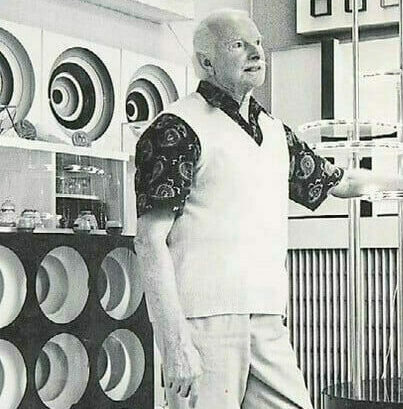Gregorio Vardánega
Born in Possagno, Italy, in 1923, Gregorio Vardánega moved to Argentina with his family at the age of three. Introduced to engraving techniques and drawing by one of his brothers, he decided to pursue an artistic career and enrolled the Academia Nacional de Bellas Artes in Buenos Aires in 1939. In 1946, he joined the Asociacion Arte Concreto-Invencion, which led him to travel to Europe, where he met Georges Vantongerloo, Antoine Pevsner, Max Bill, Constantin Brancusi, Bruno Munari, Sonia Delaunay, and Francis Picabia among others.
From the early 1950s, Vardánega started working in acrylic glass, and producing structures using overlapping wires in order to question light in relation to color, movement and space. Soon after, he realized his first kinetic works, moving and rotating at irregular intervals to produced abstract patterns through lighting, reflections and shadows.
In 1959 Vardánega moved to Paris, where he met the Argentinian artist Martha Boto, who became his partner and with whom he invented the term « chromocinetism ». Between 1960 and 1968, Vardánega was also a member of the GRAV group (Groupe de Recherche d’Art Visuel), along with François Morellet, Julio Le Parc, Francisco Sobrino, Jean Pierre Yvaral or Horacio Garcia Rossi.

